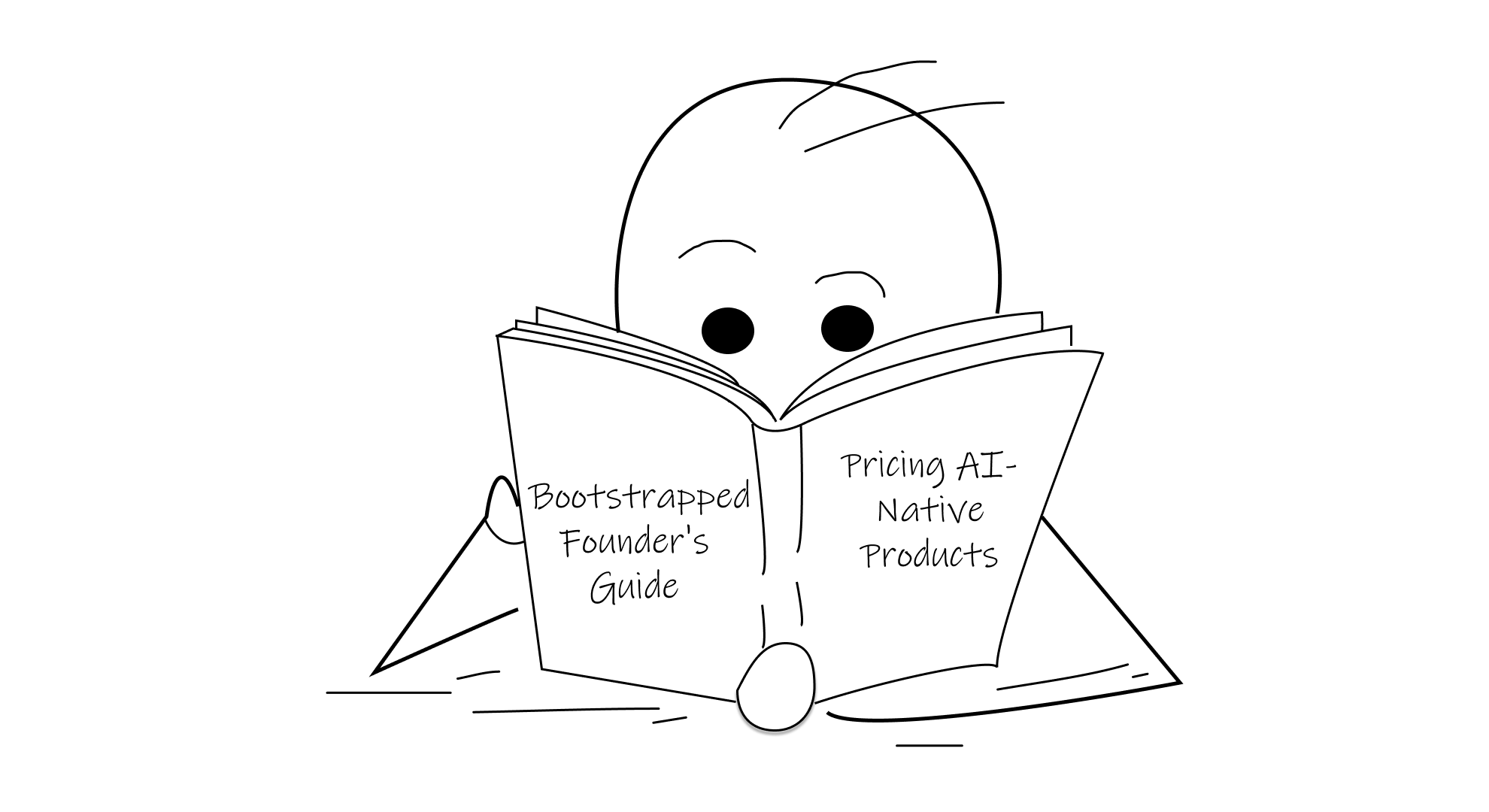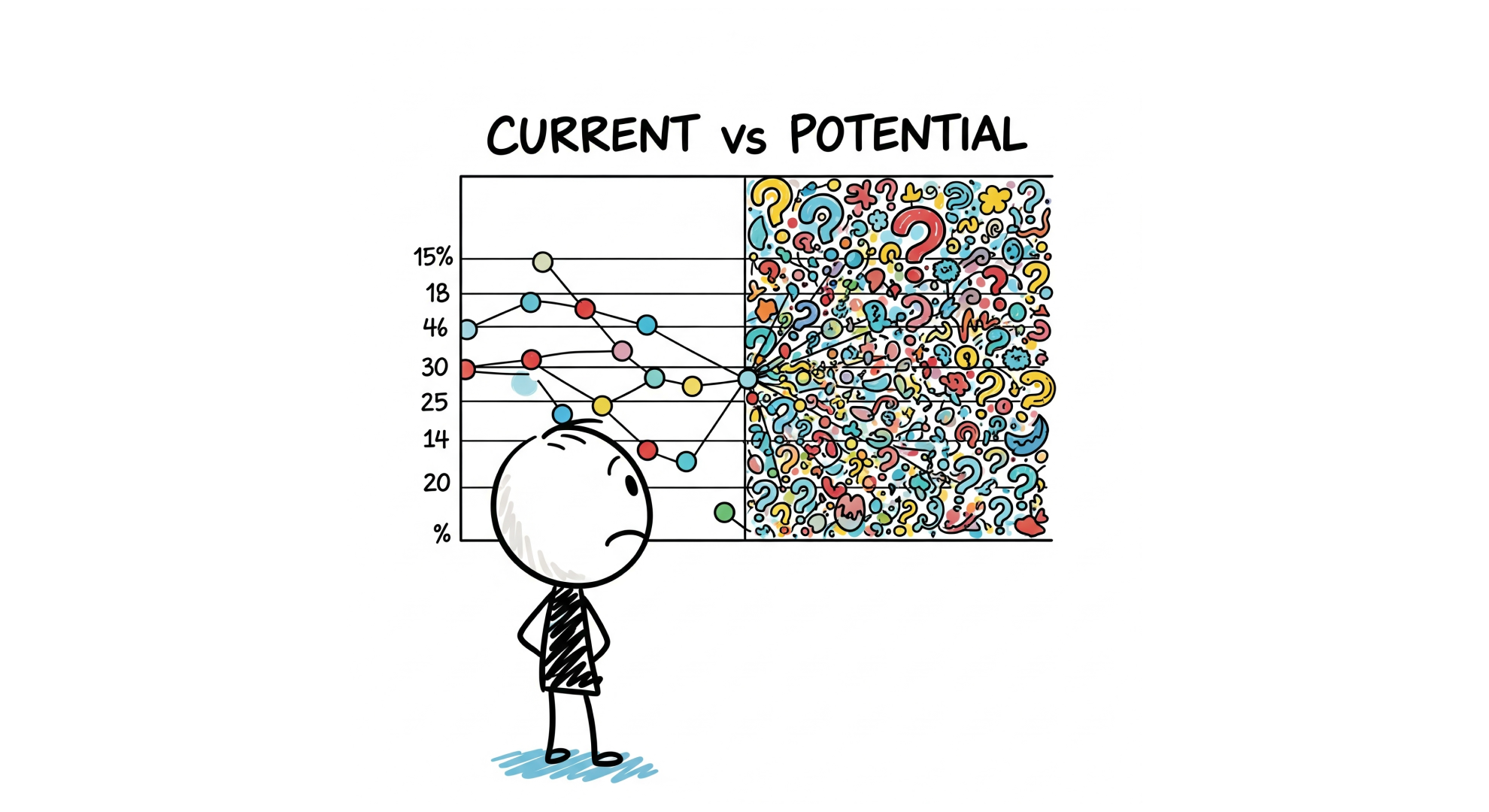The Bootstrapped Founder's Guide to Pricing AI-Native Products
How I Burned Through a Month's Budget in 3 Days (And What Every Bootstrapped AI Founder Needs to Know About Pricing)

TL;DR: The 5 Pricing Principles That Will Save Your AI Startup
- Price for value created, not costs incurred – If you save customers $10,000, don't charge $29/month
- Build operational excellence into your core – Use cheaper models for simple tasks, expensive ones only when needed
- Align your success with customer success – Charge more when customers get more value
- Transparency builds trust and justifies premium pricing – Show your real costs and reasonable margins
- Plan for success, not just survival – Your pricing should work even when you have 10x more customers

I'm the founder of Vade AI, a no-code platform that helps businesses build multilingual websites with a single click. We bridge the gap between companies and their regional customers who don't speak English. The value proposition is clear: when businesses speak their customers' native language, trust builds, and revenue follows.
But here's what nobody tells you about pricing AI-native product: traditional SaaS pricing will kill your business faster than a bad product-market fit.
Let me walk you through what I learnt about pricing AI products, and pricing philosophies of some great founders can save your startup from the dying.
The Wake-Up Call

Out of the blue, I got an email from Anthropic that all api credits were exhausted.
My first thought? "This has to be a mistake. It can't exhaust so soon."
I rushed to the usage dashboard – everything seemed fine. Maybe my code was buggy? I spent the next hour debugging, but the code looked correct too. We had launched our beta three days earlier to just 15 users. I'd budgeted $500 for the month – seemed reasonable for a beta test.
Those 15 users had generated over 200 multilingual website variations. Each generation required multiple AI API calls: translation, content adaptation, cultural localization, and SEO optimization. My carefully planned monthly budget was nearly gone in 72 hours.
That's when it hit me: this wasn't a bug or a mistake. This was the wake-up call I needed. Traditional SaaS pricing – the simple, familiar model that everyone understands – just doesn't work for AI-native products.
$500 might not sound like much, but for a bootstrapped founder from India who is counting every dollar and multiplying it by 80, it hits different.
More importantly, the scaling implications were sobering: if 15 beta users could burn through $500 in three days, what would happen with 500 paying customers?
This is the reality of AI-native products: your marginal costs aren't zero. Every user interaction has a real, immediate cost. Every feature you add multiplies that cost. And here's the terrifying part – every successful customer can potentially cost you more money. This might be the rare case where building a great product could lead to bankruptcy faster.
But here's the silver lining - some of the world's most successful founders have faced similar unit economics challenges and won. Their pricing philosophies, refined through years of building sustainable businesses, offer a roadmap for AI-native startups.
Pricing Philosophies from Successful Founders
Jeff Bezos

Jeff Bezos built Amazon on a simple principle: deliver maximum value at minimum price through relentless operational excellence. While everyone focused on his customer obsession, the real genius was his cost structure obsession.
For AI-native products, this could translate to intelligent model orchestration. Instead of using Claude for everything (the equivalent of hiring a PhD to flip burgers), imagine building a routing system:
- Simple translations: Claude Haiku ($0.25/1M tokens)
- Complex cultural adaptations: GPT-4 ($30/1M tokens)
- SEO optimization: Smaller, specialized models
- Bulk operations: Cached responses for common patterns
The potential result? Early estimates suggest this could reduce API costs by 60-70% while maintaining output quality. This operational excellence could become a pricing moat – offering competitive prices because your costs are genuinely lower.
The Vade AI Exploration: We've built a basic AI orchestration layer and are now exploring how to route tasks to the most cost-effective model that meets quality thresholds. Our initial tests show promising cost reductions, but we're still validating the approach at scale.
Elon Musk

Elon Musk didn't make Tesla affordable by accepting lower margins. He made it affordable by revolutionizing the manufacturing process. For AI products, this could mean building your own "manufacturing" infrastructure.
For a small bootstrapped team, this doesn't mean training custom models (that's expensive and time-consuming), but rather:
- Smart caching for frequently requested localizations
- Batch processing to reduce per-request overhead
- Response optimization to minimize unnecessary API calls
- Template-based approaches for common patterns
While we can't compete with venture-funded companies on R&D spending, we could potentially create cost advantages through smarter operations and resource usage.
Patrick McKenzie

Patrick McKenzie's pricing wisdom is gold for bootstrapped founders: "Charge more than you think, but less than the value you create." The key is measuring value creation accurately.
For Vade AI, we're discovering our customers' true value metrics:
- Time saved: 40+ hours of manual translation work per website
- Revenue potential: Early customers report 15-25% increases in international inquiries
- Cost avoided: $5,000-15,000 for professional localization services
Our current $29/month price point suddenly seems low when customers could save $5,000+ in localization costs for a single website.
The Pricing Reality Check: If your product could save customers $10,000, charging $100/month isn't bold – it might be leaving money on the table. McKenzie's wisdom pushes us to price based on value delivered, not costs incurred.
Jason Fried and DHH

Jason Fried and DHH at Basecamp rejected the freemium complexity plague. Their pricing philosophy: if customers can't understand your pricing in 30 seconds, it's broken.
Looking at our current pricing tiers, we're realizing we might have fallen into the feature-list trap. Customers don't care about "150 AI generations/month" – they care about building multilingual websites that drive revenue.
A Potential Basecamp-Inspired Revision:
- Starter: Build and maintain 3 multilingual websites ($39/month)
- Growth: Build and maintain 10 multilingual websites ($99/month)
- Scale: Build and maintain 50+ multilingual websites ($299/month)
This would focus on clear value proposition, no technical jargon about "generations" or "tokens."
Rand Fishkin

Rand Fishkin's radical transparency at Moz created unprecedented customer trust. For bootstrapped AI companies, being open about your costs and margins can justify your pricing and build customer confidence that you're not gouging them.
Here's our current transparent pricing breakdown and what we're learning:
Monthly Operating Costs (Current Estimates):
- AI API costs: ~$1-$2 per web page using Claude 3.7
- Infrastructure: ~$25 per month per website
- Third party tools (email, monitoring, support): ~$8 per customer
- Development and support overhead: ~$15 per customer
Break-even Analysis We're Working Toward:
- Target MRR: $10,000
- Current pricing: $29/month average
- Required customers: 345 paying customers
- Timeline estimate: 8-12 months with 40+ new customers/month
This transparency isn't just about building trust – it's about showing customers exactly what their money pays for and why our pricing is fair. When customers can see our actual costs and reasonable margins, they understand the value exchange and feel confident in our sustainability.
Stewart Butterfield

Stewart Butterfield's Slack pricing genius wasn't the freemium model – it was aligning pricing with customer success. Teams that got value from Slack naturally grew their usage and their bills.
For AI-native products, this means pricing based on outcomes, not inputs:
Traditional (Broken) Model: Pay per API call or token Success-Aligned Model: Pay per successful outcome
A Potential Success-Aligned Model We're Considering:
- Base subscription covers platform access and core features
- Success fees based on measurable outcomes:
- $15-20 per website successfully launched (covers AI generation costs + margin)
- $10-50 per month per website driving measurable international traffic
- Performance bonuses for websites exceeding engagement benchmarks
This model would align our success with customer success – we'd only make additional money when our customers succeed. The challenge is implementing tracking and ensuring the model doesn't become too complex.
The Pricing Framework For AI-Era
Building Your Cost-Conscious AI Pricing Strategy

Based on these founder philosophies and our hard-learned lessons, here's the framework every bootstrapped AI founder needs:
1. Operational Excellence Layer (The Bezos Foundation)
- Model orchestration: Route tasks to cost-appropriate models
- Batch processing: Reduce per-request overhead
- Caching strategy: Avoid repeat API calls for similar requests
- Custom models: Build proprietary solutions for high-volume tasks
2. Value-Based Pricing Tiers (The McKenzie Method)
- Measure true customer value: Time saved, revenue generated, costs avoided
- Price below value creation: Leave room for customer ROI
- Avoid cost-plus pricing: Your costs shouldn't determine customer value
3. Transparent Economics (The Fishkin Factor)
- Share your unit economics: Build trust through openness
- Explain pricing rationale: Help customers understand the value exchange
- Set clear expectations: No surprise overage charges or hidden costs
4. Success-Aligned Revenue (The Slack Strategy)
- Base subscription: Covers platform access and fixed costs
- Success fees: Additional revenue tied to customer outcomes
- Usage caps with overrides: Prevent bill shock while allowing growth
Our Implementation

Here's how we're thinking about implementing these lessons:
Current Problems with Our Pricing:
- AI generation limits create artificial scarcity without value alignment
- Fixed pricing doesn't account for variable customer value
- No transparency about costs or sustainability metrics
Potential New Pricing Architecture We're Exploring:
Foundation Tier ($39/month):
- Build up to 3 multilingual business websites
- Includes hosting, basic support, and standard AI features
- Success guarantee: Full refund if no measurable international engagement in 60 days
Growth Tier ($99/month):
- Build up to 10 multilingual business websites
- Advanced AI features, priority support, custom domains
- Performance tracking and optimization recommendations
- Success bonus: 50% discount on third month if 3+ websites drive international sales
Scale Tier ($299/month):
- Unlimited multilingual websites
- White-label options, API access, dedicated support
- Revenue sharing model: We succeed when you succeed
- Custom optimization for high-volume customers
The Sustainability Math We're Targeting:
- Goal: 345 customers at $99 average revenue per user
- Timeline: 10 months with focus on Growth tier customers
- Unit economics target: $25 marginal cost, $74 contribution margin per customer
- Runway: Efficiency improvements could extend current runway by 4 months
Parting Thoughts
If you've made it this far, thank you for sticking with me through this deep dive into AI pricing strategy. I know it's a lot to digest, but these lessons could save you from the costly mistakes I've made (and continue to make) while building Vade AI.
The AI gold rush has created a pricing race to the bottom. Venture-funded companies offer below-cost pricing to capture market share, making bootstrapped founders feel like they can't compete.
But here's what they're missing: unsustainable pricing creates unsustainable businesses. When the funding runs out, these companies will face the same unit economics reality we're navigating now.
By building operational excellence, transparent pricing, and value-aligned revenue models from the beginning, bootstrapped AI companies aren't just surviving – we're building the sustainable AI businesses of the future.
The founders who built Amazon, Tesla, Slack, and Basecamp didn't have the luxury of burning investor cash to subsidize growth. They built sustainable businesses through superior operations, clear value propositions, and honest pricing.
In the AI era, these timeless principles aren't just helpful – they're essential for survival.
Your move: Take a hard look at your AI product's unit economics. Are you building a sustainable business, or are you just hoping to raise money before the math catches up with you?
The future belongs to AI companies that create genuine value at sustainable prices. Everything else is just expensive theater.
We're building Vade AI, an AI-native no-code platform that helps businesses connect with customers in their native language.
If you want to learn from our experiences of running and building a lasting AI business – the wins, the mistakes, and everything in between – subscribe to Vade Bytes, our newsletter where we share the unfiltered journey of bootstrapping an AI company.
